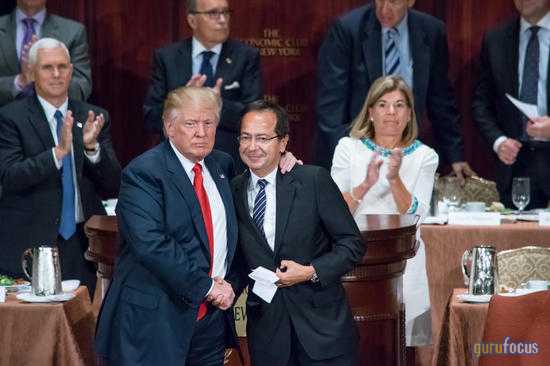This article first appeared on GuruFocus.
President Donald Trump is expanding his trade playbook with a new round of sectoral tariffs that could reshape multiple industries. Starting October 1, heavy trucks imported into the US will face a 25% duty, upholstered furniture a 30% levy, and kitchen cabinets and bathroom vanities a 50% tariff. Trump framed the measures as necessary to shield domestic producers from what he called unfair foreign competition. These moves build on his earlier proposal for a 100% tariff on branded pharmaceuticals, which, like the new duties, stem from Commerce Department investigations under Section 232 of the Trade Expansion Act. With implementation less than a week away, the administration has yet to release detailed guidance.
The implications for truckmakers could be significant. Commerce Department data shows more than 245,000 medium- and heavy-duty trucks worth over $20 billion were imported last year. International Motors LLC, formerly Navistar, looks most exposed, sourcing 98% of its US trucks from Mexico, while Daimler relies on imports for about 83%. By contrast, Paccar Inc. maker of Peterbilt and Kenworth produces almost all of its US trucks domestically, and its shares climbed 5.7% in after-hours trading. Advocates argue the tariffs could bolster US brands like Peterbilt, Kenworth, Daimler’s Freightliner, and Volvo’s Mack Trucks, while critics caution that added costs may weigh on demand already under pressure from steel tariffs and environmental rules.
The tariff net stretches wider than trucking. Furniture retailers such as Wayfair (NYSE:W), Arhaus (NASDAQ:ARHS), Williams-Sonoma (NYSE:WSM), and RH (NYSE:RH) could see higher input costs, while cabinet manufacturers argue the 50% duty still falls short of what’s needed to counter cheap foreign competition. The White House has also authorized new probes into robotics, industrial machinery, and medical devices, suggesting additional tariffs may follow. Investors are now weighing whether these measures reinforce US manufacturing strength or risk dampening demand. At the same time, Trump’s broader tariff strategy faces legal scrutiny, with the Supreme Court set to review challenges to his country-level duties.
